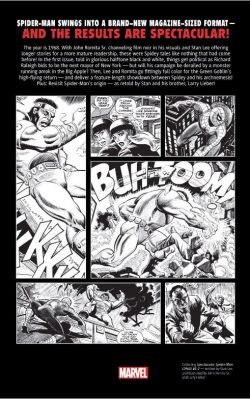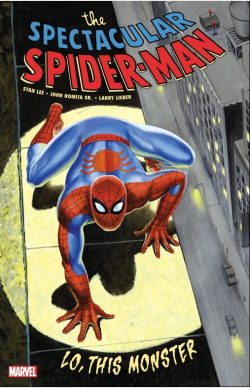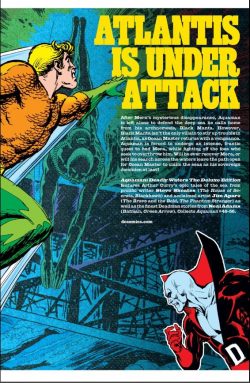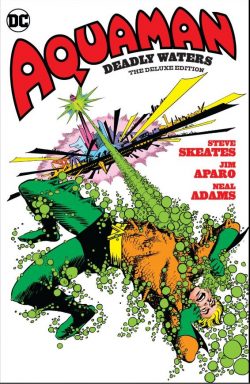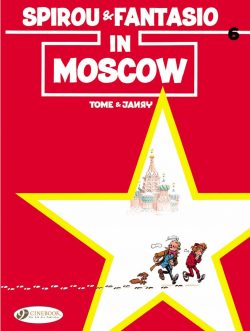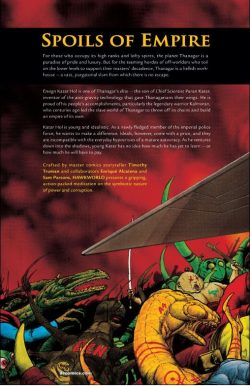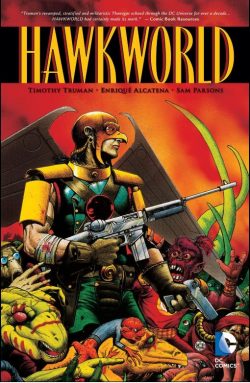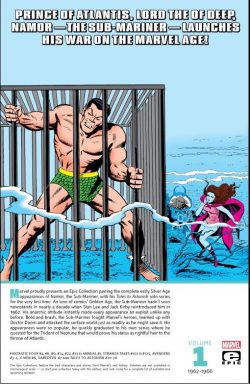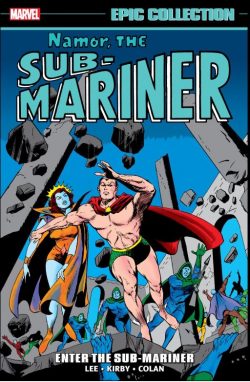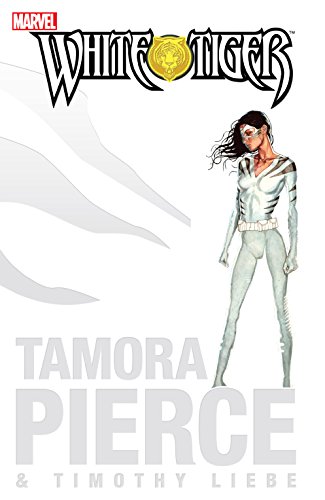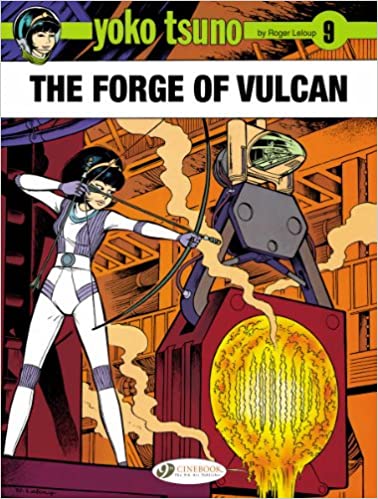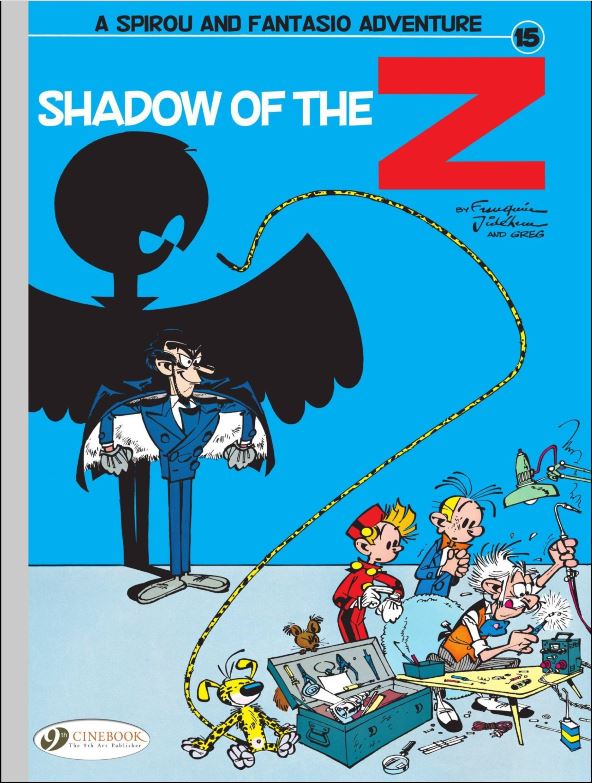
By André Franquin, with Jidéhem & Greg; translated by Jerome Saincantin (Cinebook)
ISBN: 978-1-84918-419-9 (Album PB)
Spirou (whose name translates as both “squirrel†and “mischievous†in the tongue of the Walloons) was created by French cartoonist François Robert Velter – AKA Rob-Vel – for Belgian publisher Éditions Dupuis in response to the phenomenal success of Hergé’s Tintin at rival outfit Casterman.
The legendary anthology Le Journal de Spirou was launched on April 21st 1938 with this other red-headed lad as lead of the anthology weekly comic which bears his name to this day.
He began life as a plucky bellboy/lift operator employed by the Moustique Hotel (a reference to the publisher’s premier periodical Le Moustique) whose improbable adventures with his pet squirrel Spip eventually evolved into high-flying surreal comedy dramas.
The Spirou cast have been the magazine’s vanguard for most of its life, with a phalanx of truly impressive creators carrying on Velter’s work, beginning with his wife Blanche “Davine†Dumoulin who took over the strip when her husband enlisted in 1939. She was aided by Belgian artist Luc Lafnet until 1943 when Dupuis purchased all rights to the feature, after which comic-strip prodigy Joseph Gillain (“Jijéâ€) took over.
In 1946, Jijé‘s assistant André Franquin assumed the reins, slowly retiring short, gag-like vignettes in favour of longer epic adventure serials, introducing a wide and engaging cast of regulars. He ultimately devised a phenomenally popular nigh-magical animal dubbed Marsupilami, with the wondrous critter debuting in Spirou et les héritiers in 1952.
On January 3rd 1924, Belgian Franquin was born in Etterbeek. Drawing from an early age, he began formal art training at École Saint-Luc in 1943 and when the war forced the school’s closure a year later, Franquin found animation work at Compagnie Belge d’Animation in Brussels. Here he met Maurice de Bevere (Lucky Luke creator “Morrisâ€), Pierre Culliford (AKA Peyo, creator of The Smurfs) and Eddy Paape (Valhardi, Luc Orient).
In 1945 all but Culliford signed on with Dupuis, and Franquin began his career as a jobbing cartoonist and illustrator, producing covers for Le Moustique and scouting magazine Plein Jeu. Throughout those early days, Franquin and Morris were being trained by Jijé, at that time the main illustrator at Le Journal de Spirou. He turned the youngsters and fellow neophyte Willy Maltaite – AKA Will (Tif et Tondu, Isabelle, Le jardin des désirs) – into a perfect creative bullpen known as the La bande des quatre or “Gang of Fourâ€. They promptly revolutionised Belgian comics with their prolific and engaging “Marcinelle school†style of graphic storytelling.
Jijé handed Franquin all responsibilities for the flagship strip part-way through Spirou et la maison préfabriquée, (LJdS#427, June 20th 1946. The eager beaver ran with it for two decades, enlarging the scope and horizons until it became purely his own. Almost every week fans would meet startling new characters such as comrade and rival Fantasio and crackpot inventor the Count of Champignac.
Along the way Spirou & Fantasio became globe-trotting journalists, endlessly expanding their weekly exploits in unbroken four-colour glory. They travelled to exotic climes, exposing crimes, revealing the fantastic and clashing with a coterie of arch-enemies such as Zorglub and Zantafio and one of the first strong female characters in European comics – rival journalist Seccotine (renamed Cellophine in the current English translation).
In a splendid example of good practise, Franquin mentored his own band of apprentice cartoonists during the 1950s. These included Jean Roba (La Ribambelle, Boule et Bill), Jidéhem (Sophie, Starter, Gaston Lagaffe) and Greg (Bruno Brazil, Bernard Prince, Zig et Puce, Achille Talon), who all worked with him on Spirou et Fantasio. In 1955, a contractual spat with Dupuis saw Franquin sign up with rivals Casterman on Le Journal de Tintin, where he collaborated with René Goscinny and old pal Peyo whilst creating the raucous gag strip Modeste et Pompon. Franquin soon patched things up with Dupuis and returned to Spirou, subsequently co-creating Gaston Lagaffe (now known in Britain as Gomer Goof) in 1957, but was obliged to carry on his Casterman commitments too…
From 1959, writer Greg and background artist Jidéhem assisted Franquin, but by 1969 the artist had reached his Spirou limit. He quit, taking his mystic yellow monkey with him…
His later creations include fantasy series Isabelle, illustration sequence Monsters and bleak adult conceptual series Id̩es Noires, but his greatest creation Рand one he retained all rights to on his departure Рis Marsupilami, which, in addition to comics tales, has become a star of screen, plush toy store, console and albums.
Plagued in later life by bouts of depression, Franquin passed away on January 5th 1997, but his legacy remains: a vast body of work that reshaped the landscape of European comics.
Cinebook have published Spirou and Fantasio’s exploits since 2009, initially concentrating on Tome & Janry’s superb pastiche/homages of Franquin, with infrequent doses of the original article also available in paperback and digitally.
Here, in the sequel to Z is for Zorglub (also by Franquin, Greg & Jidéhem) we head back to 1960 for a return engagement with a super-scientific arrogant buffoon whose believes he is the rightful ruler of Earth and the solar system thanks to his discovery of the mind-bending “Zorglwaveâ€.
Previously, the smug weirdo had used his hypnotic rays to make Fantasio one of his mind-controlled Zorglmen whilst attempting to destroy their inspirational boffin acquaintance: mushroom-mad Count Champignac. Apparently, they were at school together…
After an epic encounter, Zorglub was outwitted by Spirou, Spip and the Marsupilami, and all his grand plans scuttled, but as this volume opens our heroes are cleaning up in the generally placid hamlet of Champignac-in-the-Sticks where one last Zorglman is still prowls, armed with a paralysis ray and causing a catastrophic kerfuffle…
Sadly, no sooner do our heroes solve that problem than Zorglub himself turns up to reclaim the last of his evil machines and advanced aircraft: keen to resume his duel with the kindly Count. An inconclusive clash results in Zorglub heading off for his last hidden base – creating a shocking swathe of chaos and destruction in his wake – unaware that he has left a crucial clue.
Soon the heroic gang are off to Palombia – home of wild Marsupilami – landing just in time to become embroiled in the madman’s latest outrage: dominating the local toiletries market through his hypnotic devices. With all that operating capital, his conquest of Earth is assured…
As economic unrest drags the Palombian populace towards destitution and revolution, the Count perfects his anti-Z wave technology and our heroes’ counterattack, but unknown to all, a malicious old enemy has formed a third faction to exploit Zorglub’s grand scheme for shoddy personal gain. When he’s finally exposed, the monster resorts to the death-ray even Zorglub was too ashamed to use but has underestimated Spirou, the Count and the marvellous Marsupilami. The end is a sudden, shocking, comeuppance but we have not seen the last of Zorglub…
Stuffed with an astounding array of astonishing hi-tech spoofery, riotous chases, sight gags and verbal ripostes, this exultant escapade is a fast and fabulous fiesta of angst-free action and thrills. Readily accessible to readers of all ages and drawn with beguiling style and seductive élan, this is pure cartoon gold, truly deserving of reaching the widest audience possible.
Buy it for you, get another for the kids and give copies to all your friends…
Original edition © Dupuis, 1962 by Franquin, Jidéhem & Greg. All rights reserved. English translation 2018 © Cinebook Ltd.

